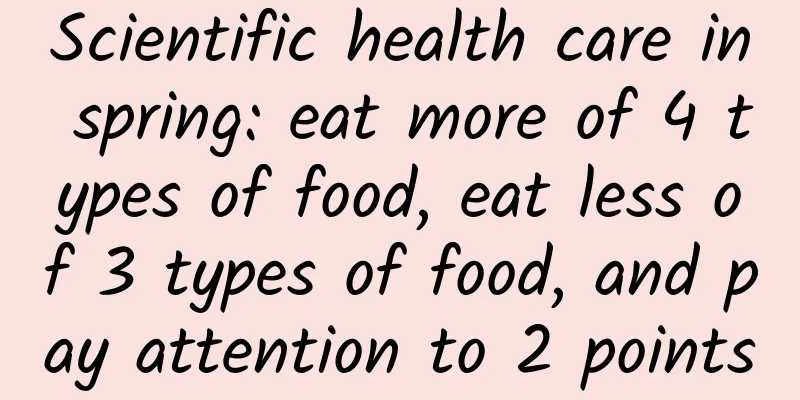National Hypertension Day | Exercise tips for people with hypertension

|
Although medication is an important part of hypertension management, lifestyle changes, especially exercise, are also important means of controlling hypertension. So, how should patients with hypertension exercise? What are the specific exercise treatment plans and precautions? Below, we will introduce you in detail. 01 1. A large number of studies have shown that moderate-intensity exercise lasting 30-45 minutes or more can reduce systolic blood pressure by 5-17 mmHg and diastolic blood pressure by 2-10 mmHg. It is recommended that patients perform moderate-intensity whole-body aerobic exercise 3-5 times a week for at least 150 minutes in total (i.e., heart rate reaches 40%-60% of heart rate reserve). We can also judge the intensity of exercise through the "conversation test". Moderate intensity means that you can still talk continuously during exercise. The exercise time is 30-60 minutes each time, which is adjusted according to physical condition and adaptability, which can help reduce weight, lower blood lipids, improve blood circulation, and reduce the burden on the heart. The basic components of an exercise session include warm-up, exercise content, finishing and relaxation, and stretching. Before starting, you can do a 6-minute walking test to understand whether the patient's cardiopulmonary function is suitable for intense exercise. The exercises that can be performed include: 1.1 Brisk walking: It is a low-intensity aerobic exercise that patients can do in the park, on a treadmill or outdoors. 1.2 Jogging: Suitable for patients with mild hypertension. It can be done in a safe place and keep a moderate speed. 1.3 Swimming: You can swim in freestyle, breaststroke or other swimming styles. 1.4 Cycling: You can ride outdoors or use indoor cycling equipment. 1.5 Low-impact aerobics: Patients can take aerobics classes or do low-impact dance moves at home. 02 2. Patients can perform moderate strength training on the basis of aerobic exercise. They should perform resistance training 2-3 days a week, 20-30 minutes each time. Training should be performed every other day. Moderate resistance training can improve muscle tension, increase muscle contraction, promote blood circulation, and improve peripheral vascular resistance, thereby helping to stabilize blood pressure and enhance cardiopulmonary function. The intensity of resistance training should be moderate. You can start with low intensity and gradually increase the exercise load to avoid excessive training that may lead to muscle strain or increased blood pressure. When performing resistance exercise, pay attention to breathing coordination, avoid holding your breath, and avoid increased blood pressure and increased cardiovascular risk. The exercises that can be performed include dumbbell and elastic band training. You can use the above tools to perform dumbbell bench press, squats, shoulder press, rowing and other exercises to improve muscle strength and endurance. However, not all hypertensive patients can perform the above-intensity exercise. Contraindications to exercise include uncontrolled severe hypertension (systolic blood pressure ≥ 180 mmHg or diastolic blood pressure ≥ 110 mmHg), acute complications such as hypertensive crisis, cardiovascular complications such as angina pectoris, acute myocardial infarction, severe diabetes, renal failure and other serious diseases. When moderate-intensity aerobic and resistance exercise cannot be completed weekly due to chronic diseases, physical activities should be performed as much as possible, such as walking on flat ground. Note: In order to ensure the safety of training, the heart rate needs to be controlled within an appropriate range, and the maximum heart rate during exercise should be controlled within (220-age)*(60%-75%). When patients are taking vasodilators and other drugs to lower blood pressure, they should increase the time for relaxation and pay attention to changes in blood pressure to avoid a rapid drop. During exercise, you should closely monitor your heart rate and blood pressure changes. If you experience dizziness, chest tightness, shortness of breath, or systolic blood pressure is too high or drops by more than 10mmHg, you should stop exercising and seek medical attention in time. References and Guidelines 1. Guidelines for the prevention and treatment of hypertension in China (revised version 2020); 2. 2020 European Society of Cardiology/Society of Hypertension (ESC/ESH) Guidelines for the Management of Hypertension; 3. American Heart Association (AHA) consensus on exercise and hypertension; 4. James E. Sharman, Andre La Gerche, Jeff S. Coombes, Exercise and Cardiovascular Risk in Patients With Hypertension, American Journal of Hypertension, Volume 28, Issue 2, February 2015, Pages 147–158, https://doi.org/10.1093/ajh/hpu191. END Name: Huang Junni, Shanghai Pudong Hospital Reviewer: Shen Xiafeng, Chief Physician, Director of Rehabilitation Department, Shanghai Pudong Hospital, Executive Editor of the Science Popularization Working Committee of the Chinese Rehabilitation Medicine Association: Jia Jing (Xinhua Hospital Affiliated to Shanghai Jiaotong University School of Medicine) |
<<: National Hypertension Day | Hypertension in children - a health hazard that cannot be ignored
>>: What impact will different puncture positions have on cesarean section anesthesia?
Recommend
How to avoid breast hyperplasia?
A common breast disease among women is breast hyp...
alert! Women who sit for a long time are prone to qi stagnation and blood stasis
Our bodies are not designed to sit for long perio...
What should you pay attention to during the confinement period after a caesarean section?
Women who have just undergone a caesarean section...
Breast tenderness during ovulation
If a woman experiences breast pain, she does not ...
Symptoms of low testosterone in women
Do you know what to eat when women have low testo...
What happens if a woman doesn't have nipples?
Women’s breast health is very important. Women sh...
If I have paronychia, do I have to remove the nail to cure it?
Not really Paronychia is an inflammation or infec...
Can I eat quail eggs during menstruation?
Speaking of quail eggs, I wonder if you think of ...
Can I walk and exercise during menstruation?
Boys will never have the experience of menstruati...
Is it normal for a girl to have a hard spot around her belly button?
The location of the belly button is very importan...
Why is the leucorrhea yellow and smelly?
For female friends who have symptoms such as yell...
Does breast development hurt in women?
Girls will have symptoms of breast pain during pu...
What should I do if a woman's lower body is swollen?
For women, if swelling occurs in the private part...
Flu Facts: Syncytial Virus and Adenovirus
Influenza virus and adenovirus are two common res...









